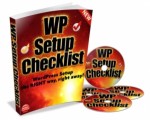 License Type: Master Resell Rights
License Type: Master Resell Rights  File Size: 714 KB
File Size: 714 KB File Type: ZIP
File Type: ZIP
 SKU: 11469
SKU: 11469  Shipping: Online Download
Shipping: Online Download
Ebook Sample Content Preview:
For many years, the way to finance real estate was to make a 20% down payment, and get a loan for the remaining 80%. Of course you could make a higher down payment, but 20% was typically the minimum. Luckily, this standard has changed.
There are now several finance options available to the real estate investor. One popular way to finance your purchase is to have a second mortgage. The buyer makes a 5% down payment, and borrows the remaining 15%, usually at a higher interest rate, on a different loan.
Even though it’s nice to invest less on a property, the higher interest rate isn’t the only drawback. Usually, if the buyer does not meet the 20% minimum, they are required to get costly private mortgage insurance (PMI).
You are able to remove PMI when the loan-to-value (LTV) ratio reaches 80%. This is achieved by paying down the second mortgage and appreciation of the property value. This does not happen often because the property is usually sold or the buyer refinances before PMI can be removed.
For creative investors, other financing sources exist. Manufacturers of homes in planned developments are often willing to provide financing to early buyers.
Another risky and rather complicated way of financing a property is called ‘sub2’ which stands for ‘subject-to’. This type of deal is when the seller gives you the deed to the property, the loan stays in place, but the buyer never legally takes over the loan, just the payments. There are many different versions of this kind of transaction. Because of the complexity and risk, this method of funding an investment is not recommended for beginners.
You can also consider forming a limited partnership to finance your real estate investment. There are many different arrangements on this method. Some types involve each person in the partnership contributing in a portion of the cost, usually 50% each. However, sometimes the profit is distributed relative to the original amount invested. Another arrangement is that one half of the partnership contributes the capital, and the other half provides the needed services, such as repairs on a home that needs to be fixed. There are many different variations of this method.
Government loans are available to low income investors, or buyers who have served in the military. These programs are usually only available for primary residences.
Did you ever think about buying a home on a credit card? This is another method of financing your real estate purchase, although it's usually not recommended. Obviously, the interest rates on most credit cards are substantially higher than loan rates. Another drawback is that lenders determine your creditworthiness based on your outstanding debt, and if you use credit card cash advances to cover the 5-20% down payment that you need, you’ll probably get turned down for a loan. This is also true for money borrowed from friends or family, unless you can show that the money is truly a gift.








